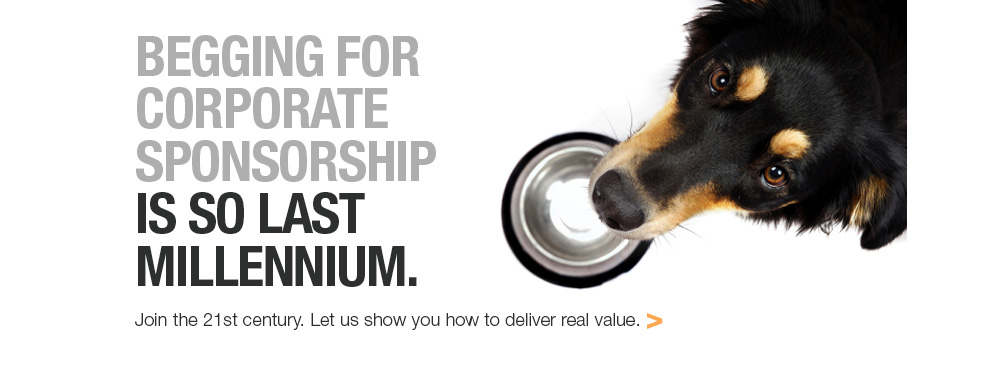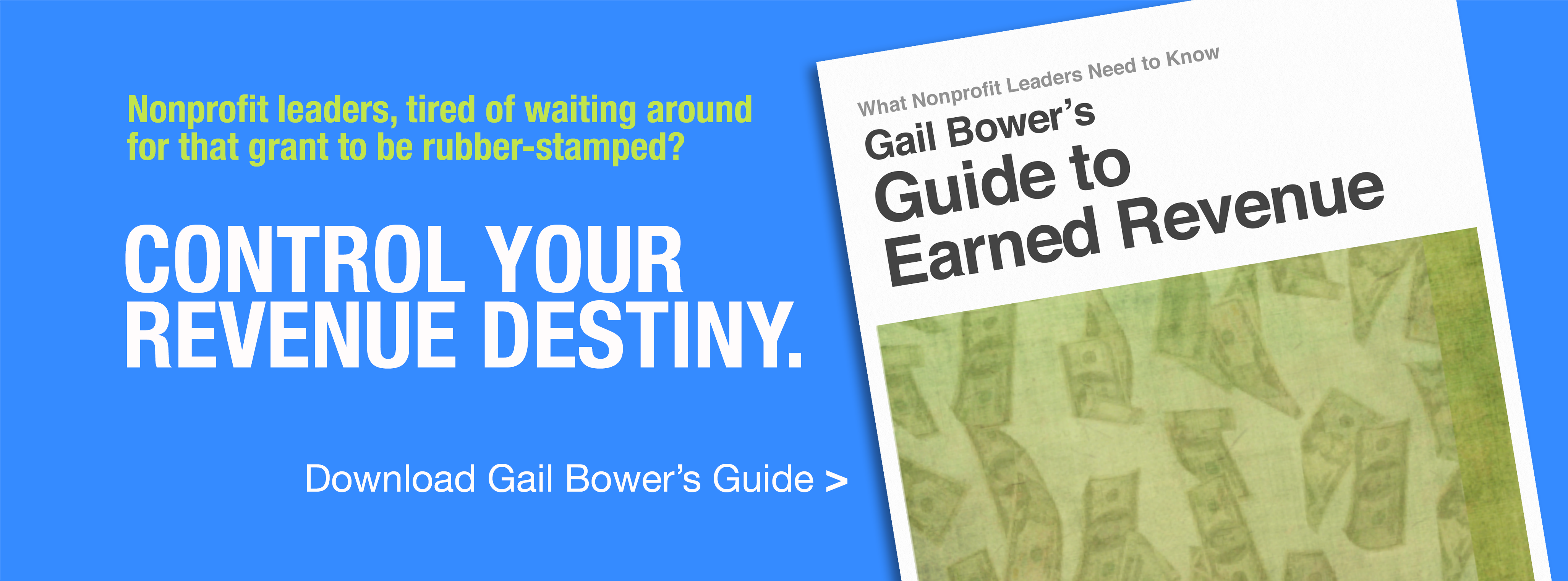4 Ways Partnerships with Nonprofits Fail & What to Do About It
By Gail S. Bower
If your corporation is like most, you’re inundated with funding and sponsorship requests from nonprofit organizations. While these ties may be ideal marketing vehicles to support communications initiatives, partnerships that are poorly selected or structured waste money, have no impact, or, worse, yield repercussions.
Your business is operating in a culture facing several competing realities. Here are just a few:
- America is frustrated and most likely does not trust your company.
- The proliferation of media since the 1970s means there are exponentially more ways to tune out your company's message.
- Values are shifting. Consumers want less. And furthermore, they don’t want to be thought of primarily as consumers.
- Your corporate reputation is measured in part by being trustworthy and transparent, with honest business practices (Edelman Trustbarometer, 2012).
You face tremendous obstacles while communicating with authenticity and a sense of trust to build intimacy with audiences.
While you have many choices on how to communicate messages about your products and services, your brand, and about its honest business practices to all your audiences, one medium may help your messages transcend today’s realities: corporate sponsorship, particularly of a nonprofit organization. Such partnerships can help you connect with communities, learn about and engage them on key trends and issues they face, enhance the repute of your brand and realize other specific business or marketing objectives.
But only take this route if there’s a truthful alignment between your business objectives and the mission of the nonprofit with which you partner.
One of the most valuable assets nonprofit organizations have in their inventory is that their audiences trust them (though the sector’s trustworthiness dipped 5 percentage points since 2008, according to the 2012 Edelman Trustbarometer). By partnering with an organization, your business is essentially anointed by the nonprofit and trustworthy by association in the perceptions of constituents, donors, stakeholders, and community partners. This instant trust is fragile so tread lightly and don’t take it for granted.
However, the biggest mistakes corporations make when partnering with nonprofits entail doing just that. Not only are these mistakes problematic for the nonprofit, they’re costly for businesses and undermine repute in deeper ways.
So, what can you learn from four of the most common mistakes, and how can you avoid them?
Mistake #1: No involvement, just cash.
Sometimes businesses sign on as sponsors by sending in a check and a logo—and that’s it. Don’t get me wrong. Nonprofits need contributions, particularly unrestricted donations—i.e. not designated for a particular program or initiative—to support operational costs. Your business simply may want to make a contribution, and that’s fine.
However, what you may not realize is that corporate sponsorship is much more involved than just sending a check and a logo. One of the most important distinctions about sponsorship is that it is experiential. You have the opportunity to bring your brand, product or service to life with attendees of an event, festival or conference, or with individuals otherwise drawn together by a passion or purpose. Let them get to know you. Let them touch, feel and use your product. Give them a reason to try it out. Build on the trust you’ve tapped into through the organization. And use it as a focal point for efforts across silos, with components of interest to multiple audiences.
Action:
Don’t just send cash and a logo and expect to achieve results. Work with your nonprofit partners to co-create sponsorship opportunities that achieve your desired outcomes. Invest in the opportunity commensurate with the results you seek.
Mistake #2: Gold, Silver, Bronze.
About a decade ago, corporations began asking for benefits in exchange for their philanthropic gifts. Nonprofit development officers, on whose shoulders it fell to interpret what its corporate funders wanted, responded by conflating the marketing-driven form of corporate sponsorship—a powerful medium used especially in entertainment and sports arenas for decades—with corporate philanthropy. What emerged over time—but hopefully will fade away more quickly—is the ubiquitous and generic Gold, Silver, Bronze menu of offerings.
These levels are not corporate sponsorship. They are modest contributions with generic recognition While many small and medium-sized nonprofit organizations count on these donations to fund galas and other events, business leaders would be wise to recognize the limitations of these packages and decide whether they meet the company’s specific goals.
If your goal is to make a donation in support of a nonprofit organization’s mission or event, go ahead and be a Gold, Silver, or Bronze underwriter. Better yet, meet with the nonprofit and learn how to support a program more meaningfully through your foundation or philanthropy office.
However, if your goal is to provide an experience of your brand, bring your CSR or green story to life and move the needle towards substantively accomplishing business or communications goals, these generic offerings are not the right approach.
Action:
Clarify whether you’re sponsoring or making a philanthropic contribution. Approach the nonprofit appropriately.
Mistake #3: Tenuous tie.
The recent economic pressures have been greatly felt by the nonprofit sector, and they need money. Government funds have been reduced or eliminated. Individual giving has fluctuated because people are anxious about jobs and their own financial states. Foundation dollars, too, have fluctuated with the stock market, and all sources of dollars seem to have shrunk.
When this pressure builds, people get more creative about where to turn for dollars, and sometimes this exploration leads them down more adventuresome—or precarious—paths. Nonprofit leaders are then faced with an inevitable boundary. At what point does accepting a donation or partnering with a business compromise organizational integrity?
A young nonprofit development manager for an organization that preserves Pennsylvania farmland who attended one of my workshops came across this ethical dilemma. She asked me what I thought about her organization partnering with a real estate developer who had approached the organization several times. I told her she needed to find out directly what the developer’s goals and long-term plans are and whether they are in sync with her organization’s mission. If the developer wants to build tract housing on farmland that the organization intends to preserve, they’ve got a problem. She seemed pained with her question, pressured to raise dollars at all costs, but relieved when I corroborated what her conscience knew was the right thing to do.
Obviously a peace organization would never partner with a defense contractor. An organization fighting childhood obesity is not going to sign up their local cola bottler. But sometimes these are the very companies approaching nonprofit organizations with cash.
KFC partnered recently with a breast cancer organization on a cause marketing campaign called “Buckets for a Cure.” Yes, buy pink buckets of chicken and a contribution would help fund a cure. Meanwhile, on the organization’s Web site, a news scroll warned of midlife weight gain increasing individuals’ risks of cancer. We can agree that KFC chicken is not exactly an ingredient for a healthy diet. This sort of pairing compromises both partners’ integrity.
Action:
Seek partners aligned with your values, business objectives and intentions. These partners may represent causes of great and specific interest to your customers.
Mistake #4: Poor partner.
Collaborating with the wrong partner can be a nightmare. While there are many nonprofit leaders who are sophisticated business partners work to uncover your desired business outcomes, there are many who lack sufficient tools, training, staff and knowledge about sponsorship to develop what you need, despite their good intentions.
One of the most challenging projects I faced years ago was securing sponsorship for a bottled water company interested in outdoor and health-related events. Calls that went unreturned, unclear value and poor operations were just a handful of the problems encountered.
If you’re facing similar difficulties, it could be a red flag. The ideal partner will be professional, respond rapidly, ask good strategic questions and guide you through a process to learn more about whether and how your two organizations may best work together. Then, this partner will present you with ideas in a proposal oriented around accomplishing your goals.
Your partner won’t stop collaborating once the deal’s signed and the monies are paid. Rather, the best partners spearhead your collaboration and guide you through the execution—and beyond.
Action:
Pay attention to how early discussions unfold. Ask your own questions about how the organization operates and about their sponsorship practices.
You may feel pressured with all the requests on your desk. Your personal compassion combined with your company’s charitable approach to doing business may tug in favor of sending bits of money everywhere. But does fracturing your resources create the impact you want to make? Will you gain, in terms of enhanced repute, greater influence, increased customer loyalty and new sales?
Devise a strong strategy, structure the sponsorship properly and build it with a trusted partner. Only then will your sponsorship effort in support of your communications initiatives be a powerful vehicle.
Originally published in PR News' 2012 Corporate Social Responsibility & Green PR Guidebook.
 For Sponsors | in
For Sponsors | in  Corporate Sponsorship |
Corporate Sponsorship | 






